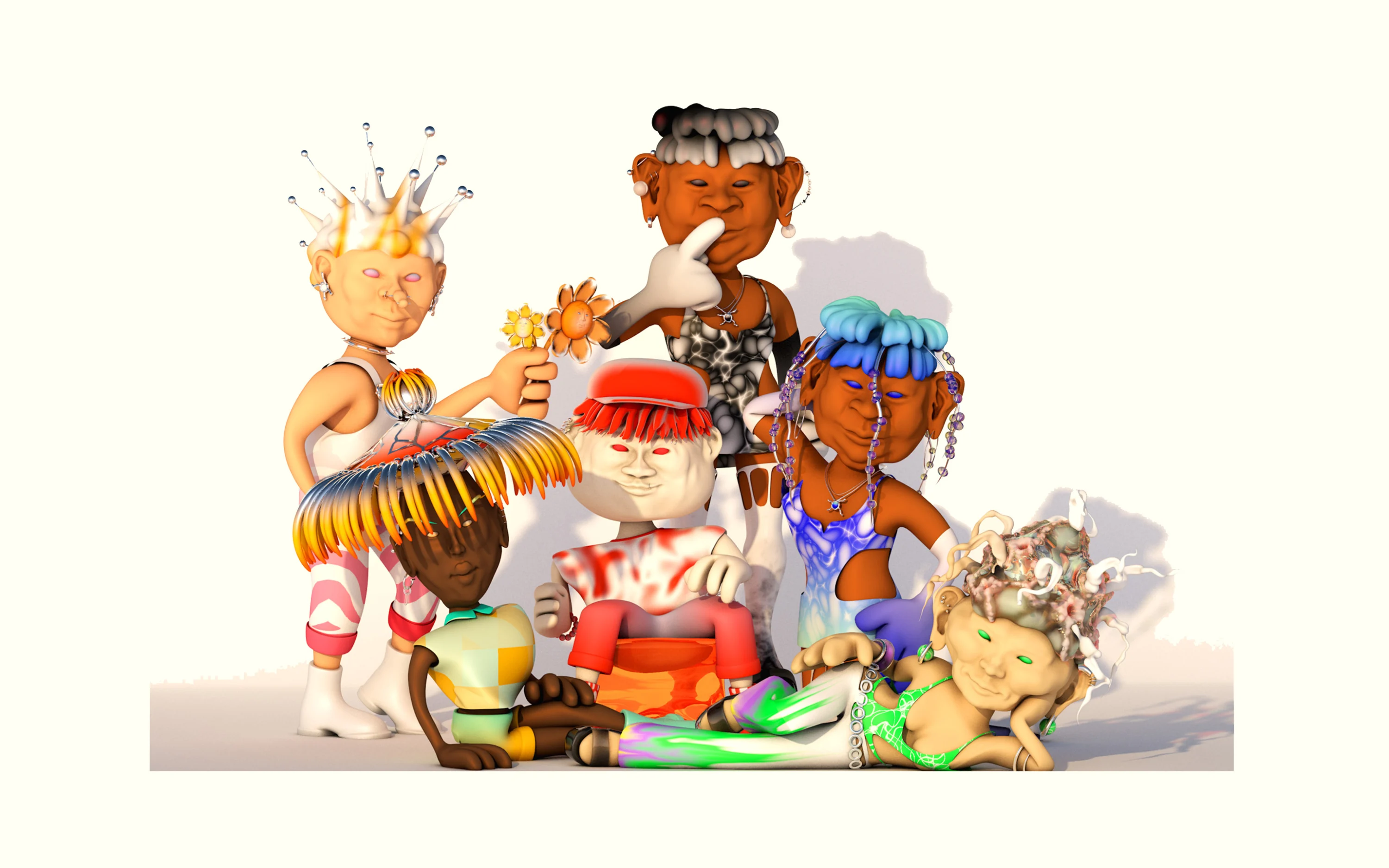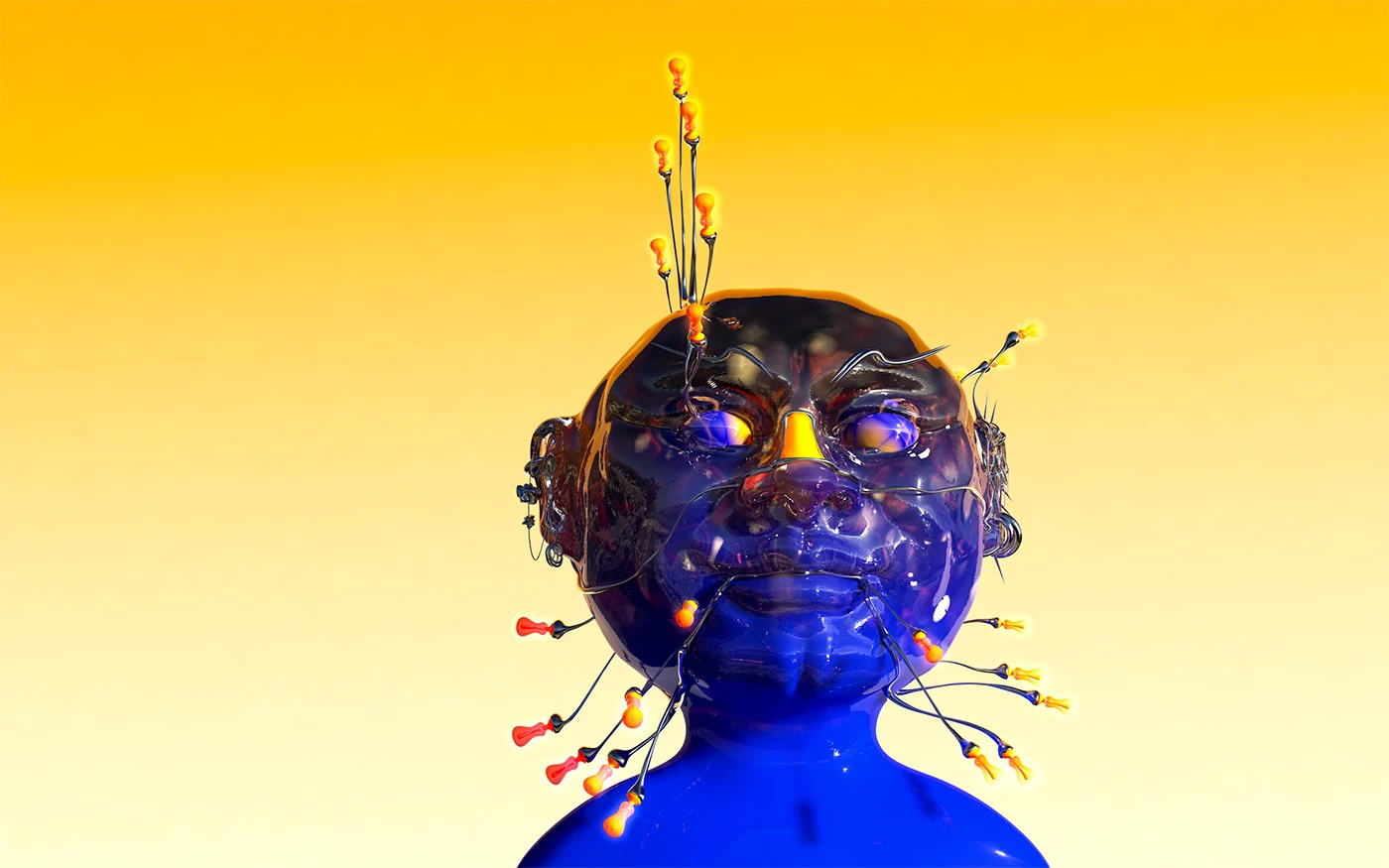
South Korean artist Jae Yeon Kim started out as an illustrator, but made the move to 3D animation when she realized its endless possibilities. Writer Sophie Haigney finds out how Kim takes her long-term study of the movement, emotions and behaviour of people in the real world, and brings it to life through colorful three-dimensional characters.
The figures wiggle and shake and twist. Someone with spiky hair does the worm, and then jumps into a two-legged split. Another in platforms and a leotard shakes their hips. These figures are anthropomorphic but not exactly human, with boxy hands that are larger than life and hair that grows to resemble feathers or tree branches. There is something robotic about them, but their movements are also fluid and lifelike, as they move and twist and shake on a disembodied dance floor in a virtual club.
This is an animation from artist Jae Yeon Kim’s Drag Rangers series, a set of artworks that use 3D animation to explore gender fluidity and the body. Like many of Kim’s works, the series emerged from a mishmash of nontraditional pop cultural influences: in this case, a combination of RuPaul’s Drag Races and the Power Rangers. “This might sound a bit silly,” she says, “but it kept coming into my mind, so I dug into those references.” The visual language of drag culture and action figures combine to make for compelling, complex characters whose gender expressions and bodily forms both defy norms.
Concerns about gender, sexuality, and the body appear throughout Kim’s 3D-animated work; she seeks to explore and represent LGBTQ bodies, and gender more generally, in new ways. “As an artist, I was thinking about my role,” Kim says. “I thought, ‘How could this issue be treated in a soft and fun way?” Fun and softness, sometimes even a literal softness, permeate Kim’s works: a face smiles from the center of a flower that extends its hands where leaves would normally be. Even her most cyborgian works are infused with color.


Kim, who lives in Seoul, is part of the DIGI-GXL community of illustrators and animators, which describes itself as “an inclusive 24/7 global support network championing womxn, trans folk and non-binary people who specialize in 3D design and animation.” The community facilitates everything from sharing software tips to working on full-blown collaborations. Though technology has made it more feasible to be a one-man production show, Kim says that unlike traditional illustration, a strong culture of collaboration exists in animation. “It is almost impossible to teach ourselves every newly released program and function every year,” she says. “So I have gotten a lot of help from the DIGI-GXL community due to this industry ecology.”
Kim has been drawing for most of her life, whenever and wherever she could. “It was quite catastrophic to my parents I think, my mom just caught me so many times, and would say, Jae do not draw on that,” she says. She studied design at Goldsmith’s University of London between 2016 and 2019, and was working in traditional illustration when she stumbled across some artists working in 3D animation. She was amazed by what seemed possible in this medium. “The narrative seemed so much richer,” she said. “Making animation you can really do so many different things, with styles, textures, narratives, sounds, story, everything.”

Some of her projects still start with the basics; she’ll work on drawings before moving to animation software. Sometimes, though, she says it can be freeing to start onscreen without drawing anything at all, beginning with just shapes. “There’s a real contrast between these two approaches,” she says. The latter process has something more in common with sculpture – beginning from rough outlines and molding something new. This kind of shaping-from-the-rough has helped Kim go in unexpected directions with forms and bodies.
Characters are very important in Kim’s work, and she said her inspiration for them comes from places like fashion magazines and video games, and sometimes from things like “the shape of a fruit or the feet of a bird.” She has an almost anthropological interest in human behavior and movement, and spends time watching and analyzing friends and strangers. “When I lived in London, I used to go to Waterloo Station and just watch people and draw them,” she says.
The influence of this study is clear in her work. A recent animation called Alteration of Emotion #1, part of her Alter Egos series, zeroes in on a face that is moving from a smile into something more like anger, and then back again. The changes are simultaneously almost imperceptible yet completely transformative of the face. Some recent works have featured characters in quarantine or isolation, lounging alone in obvious ennui. All of these works are inflected with close attention to the expressiveness of the body.
“Body language and body posture are very affected by attitude,” she says. “Everyone has a different style of movement.” She is in the very early stages of a collaborative project that involves using a motion sensor and tying that to animation – something that might bring movement into even greater focus in her work.

Part of what is so distinct about 3D animation is how Kim can borrow things plucked from real-world inspirations, and then alter them or transform them totally. “For example, some people walk super fast, but others are sluggish,” she says. “In the 3D world I can swap their movements and then they will look different. I love this kind of idea: by changing the way something behaves, you can create new characters.”
This idea of transplantation through animation – the freedom to endow characters with traits, and to mix and match – is part of what makes animation such a compelling medium for exploring gender and the body. Nothing about Kim’s animated characters has to be static or fixed. They don’t need to be male or female, or even human or non-human. These animated figures and worlds can exist in a permanent state of flux, as fantasy and reality mingle to create something new altogether.